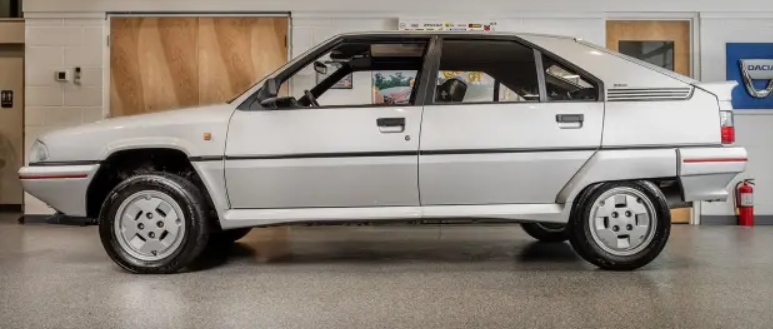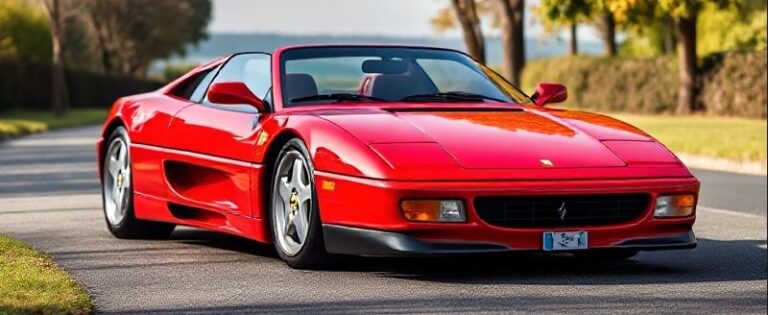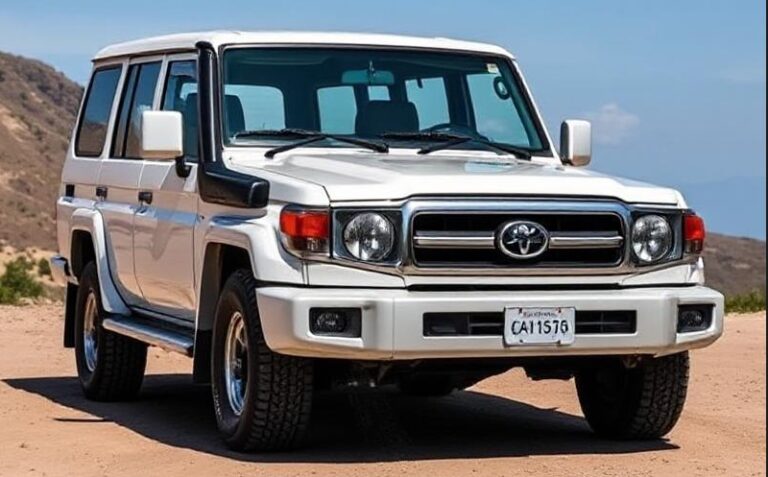The Angular Avant-Garde: Charting the Evolution of the Citroën BX
In the annals of automotive history, few cars so perfectly encapsulate their era while simultaneously defying it as the Citroën BX. Born from a period of corporate restructuring and creative necessity, the BX was a symphony of straight lines, lightweight plastics, and hydraulic wizardry. It was a car that saved a company, democratized cutting-edge technology, and offered a solution for nearly every driver, from the frugal commuter to the adrenaline-seeking enthusiast. Produced from 1982 to 1994, its twelve-year lifespan was marked by constant evolution, a sprawling family of models, and a legacy of being one of the most characterful and versatile cars of the 20th century.
The Genesis: Project XB and a Bold New Direction (1978-1982)
By the late 1970s, Citroën was at a crossroads. Now under the ownership of Peugeot as part of the new PSA Group, the pressure was on to develop a commercially successful mid-size family car to replace the aging and quirky GSA. The new car, codenamed ‘Project XB’, needed to be a volume seller. It had to bridge the gap between Citroën’s tradition of radical innovation and Peugeot’s pragmatic, cost-effective engineering.
The masterstroke was commissioning Bertone’s chief designer, Marcello Gandini—the man behind the Lamborghini Countach and Lancia Stratos—to style the car. Gandini didn’t start from scratch; he adapted his striking, wedge-shaped 1979 Volvo Tundra concept car, a design deemed too radical by the Swedish firm. For Citroën, it was perfect. The sharp, origami-like creases and expansive glasshouse were futuristic and utterly distinctive.
Beneath the avant-garde skin, PSA pragmatism prevailed. The BX would use the new ‘XU’ series of petrol engines and the robust ‘XUD’ diesels, shared across the Peugeot-Citroën range. However, Citroën’s soul was preserved through two key features: the extensive use of lightweight composite body panels (the bonnet, tailgate, and C-pillar trims were plastic) and, most importantly, the retention of its legendary self-levelling hydropneumatic suspension, guaranteeing the famous “magic carpet” ride.
On September 23rd, 1982, the Citroën BX was spectacularly unveiled, suspended from the first floor of the Eiffel Tower. The world was introduced to a car that looked like science fiction but was priced for the masses.
Series 1: The Original Iconoclast (1982-1986)
The initial range was straightforward, establishing a hierarchy that would expand over time. The Series 1 cars are instantly recognisable by their more angular bumpers, orange front indicator lenses, and, most famously, their spectacular interior. The dashboard was pure Citroën theatre, featuring a single-spoke steering wheel and PRN (Pluie, Route, Nuit – Rain, Road, Night) satellite control pods, which allowed the driver to operate wipers, lights, and indicators with their fingertips without removing their hands from the wheel. The speedometer was an equally eccentric ‘bathroom scale’ rotating drum.
Initial Launch Models & Trim Levels (1982-1984):
BX: The base model, sparsely equipped. Offered with the 1360cc (1.4L) 62 PS engine.
BX 14 E / 14 RE: The core of the early range. The ‘E’ was the entry-level trim, while the ‘RE’ added features like a rev counter and plusher upholstery. Both used a 72 PS version of the 1.4L engine.
BX 16 RS / 16 TRS: The more powerful options, using the 1580cc (1.6L) engine producing 90 PS. The ‘RS’ was well-equipped, but the ‘TRS’ was the top-tier luxury model, boasting electric front windows, central locking, and distinct C-pillar trims.
Expansion and the Dawn of Performance (1984-1986):
The BX quickly proved a sales success, and Citroën began to flesh out the range, introducing models that would define its versatility.
BX Diesel (1984): The arrival of the 1905cc (1.9L) 65 PS XUD diesel engine in the BX 19 RD and better-equipped 19 TRD was a game-changer. The engine’s blend of reliability, fuel economy, and decent performance made the BX one of Europe’s most popular diesel cars. A smaller 1.7L diesel followed.
BX Break / Evasion (Estate) (1985): Designed by Heuliez, the estate version was a triumph of packaging. With its flat load floor (thanks to the hydropneumatic suspension) and cavernous space, it became the workhorse of choice for families and businesses alike. It was available in petrol and diesel forms.
BX Sport (1985): The first true performance BX. Developed by renowned tuner Danielson, the 1.9L petrol engine was fitted with twin Solex carburettors, raising power to an impressive 126 PS. A factory body kit, alloy wheels, and a unique interior distinguished this potent and highly sought-after model.
BX 4TC (1986): A legendary footnote. To compete in the fearsome Group B rally championship, Citroën had to build 200 road-going homologation specials. The BX 4TC was a monster, sharing little with the standard car. It had a longitudinally mounted 2.1L turbocharged engine, four-wheel drive, and dramatically wide bodywork. Its rally career was short and unsuccessful, and with most of the unsold road cars being bought back and scrapped by Citroën, it remains an incredibly rare and fascinating piece of BX history.
Series 2: Refinement and the Apex Predator (1986-1994)
In mid-1986, the BX received a significant mid-life facelift, creating the ‘Series 2’. The changes were subtle but effective. The exterior featured smoother, more rounded bumpers, smoked rear light clusters, larger wing mirrors, and clear front indicators.
The most dramatic change was inside. The iconic but divisive satellite dashboard was gone, replaced by a more conventional instrument binnacle and steering column stalks sourced from the Peugeot parts bin. While purists mourned the loss of the quirky original, the new layout was more ergonomic and appealed to a broader market, helping to sustain the BX’s sales momentum. The trim level nomenclature was also revised and expanded significantly.
Series 2 Models & Trim Levels (1986-1994):
The range became vast, with trim levels often tied to specific engines. The naming system generally followed a pattern: a letter denoting the trim level (e.g., T), a letter for the fuel type (G for Gasoline/petrol, D for Diesel), and a letter for equipment level (E, S, Z).
Entry Level: BX 14 E/TE, BX 15 TGE (using a 1.5L version of the XU engine), BX 16 TGS. Diesel models included the BX D and BX RD. These were the functional, high-volume sellers.
Mid-to-Luxury Range: BX TZD (Turbo Diesel), BX 19 TZS. These models offered a high level of comfort, with velour upholstery, electric features, and often alloy wheels.
The Turbo Diesel Revolution: The BX DTurbo (or TZD Turbo), introduced in 1988, was a revelation. Its 1.8L XUDT engine produced 90 PS and a huge wave of torque, offering petrol-like performance with diesel economy. It became one of the most desirable models in the entire lineup.
The Rise of the GTi:
The Series 2 facelift heralded the arrival of the models that cemented the BX’s cult status: the GTi family.
BX GTi (1987): Using the 1.9L fuel-injected engine from the Peugeot 205 GTi, the BX GTi produced 125 PS. It was less frantic than its Peugeot cousin, offering a superb blend of hydropneumatic comfort and genuine cross-country pace. It was the ultimate “hot hatch for grown-ups.”
BX GTi 16v (16 Soupapes) (1987): This was the undisputed king. The BX GTi 16v was the first French production car to feature a 16-valve engine. Its 1.9L powerplant produced a formidable 160 PS, rocketing the lightweight BX from 0-60 mph in under 8 seconds. With its subtle body kit, wider track, and uprated suspension, it was a true performance car capable of humbling far more expensive machinery on a challenging road. It remains the most collectible and celebrated mainline BX.
.
MANY auto lovers not only spend time in their garages to tinker on their autos, but have other projects going on in there as well. Wood working is a popular pastime for the creative type of individual. Not sure what to make next? Or thinking about getting into this kind of hobby? There’s lots of possibilities… Here’s some of them…

.
Niche Explorations:
Citroën continued to innovate into the late 80s and early 90s.
4×4 Models (1989): Permanent four-wheel drive systems were offered on the BX GTi 4×4 and the Break 4×4, adding all-weather capability to the car’s repertoire.
Special Editions: As the BX aged, Citroën maintained interest with a dizzying array of special editions, often offering unique paint, decals, and extra equipment. Names like Meteor, Leader, Image, Calanque, Ourane, and Millésime became common sights, ensuring there was a BX for every taste and budget.
Epilogue: The End of an Era (1993-1994)
By the early 1990s, the BX’s sharp-edged design was beginning to look dated compared to the rounded forms of its newer rivals. In 1993, Citroën launched its replacement, the Xantia. Production of the BX hatchback ceased that year, but the ever-practical Break (Estate) model, for which a Xantia replacement was not yet ready, soldiered on for another year, with the last one rolling off the line in 1994.
Over its twelve-year production run, 2,315,739 Citroën BXs were built. It was the car that secured Citroën’s future within PSA, proving that the brand could blend its unique engineering identity with mass-market appeal. It was a technological tour de force for its time, bringing hydropneumatic suspension, diesel efficiency, and 16-valve performance to the masses. From the most basic 1.1L model (available in some markets) to the fire-breathing GTi 16v, the BX was a car of incredible breadth and character—an angular, brilliant, and unforgettable titan of the 1980s.






